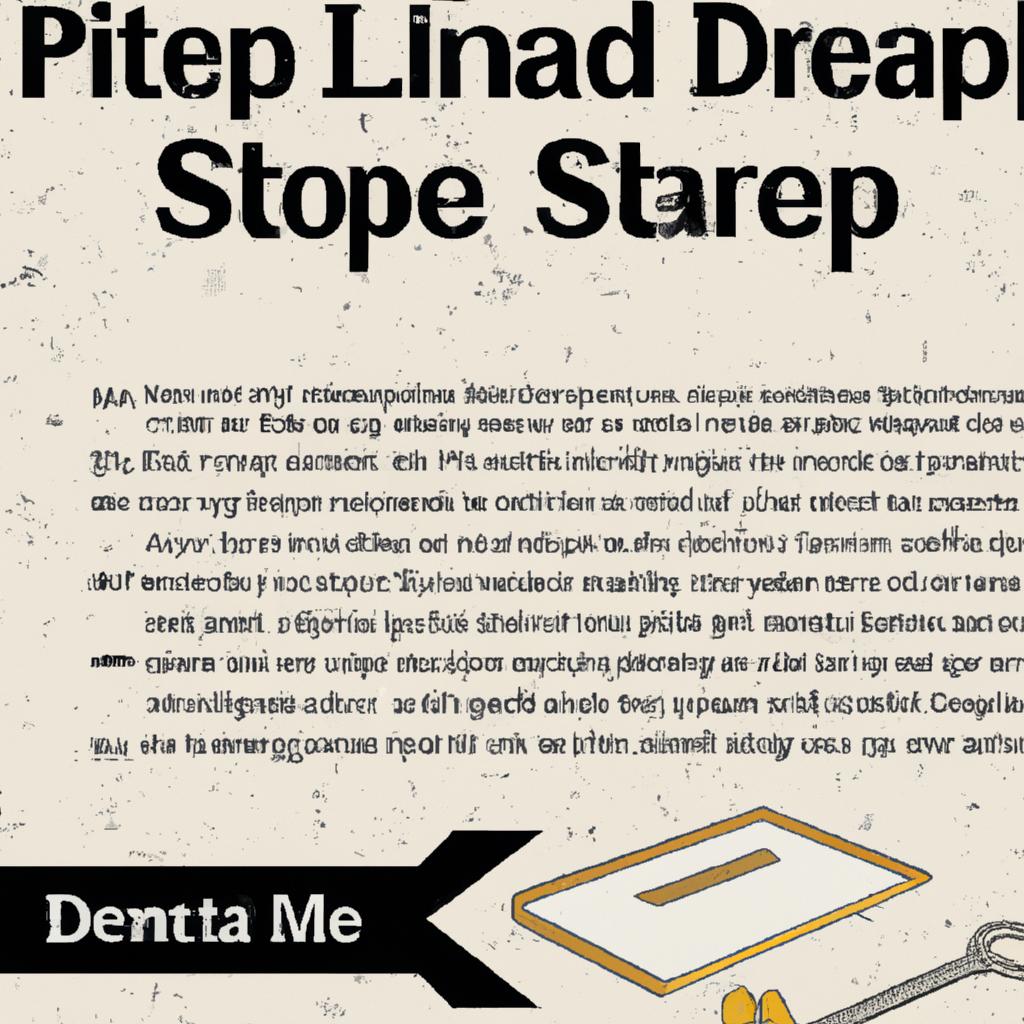Handling the legal and financial matters after the death of a loved one can be a daunting task. One crucial responsibility is to ensure the deceased individual’s name is removed from the property deed. This process requires meticulous attention to legal procedures and paperwork to facilitate a seamless transition of ownership. In this article, we will delve into the process of removing a deceased individual from a property deed and offer advice on how to efficiently handle this critical aspect of estate planning.
Grasping the Legal Procedure for Removing a Deceased Individual from a Deed
When an individual passes away, it is essential to remove their name from the property deed to facilitate a seamless transition of ownership. This legal procedure can be intricate, but with the right guidance, it can be executed efficiently and effectively.
Here are the key steps involved in removing a deceased individual from a property deed:
- Identify the property ownership: It is crucial to determine the current owners and whether the deceased individual owned the property individually or jointly with others.
- Find the deceased individual’s will: If the deceased individual left a will, it might specify how their property share should be distributed. This will help determine the next steps in the process.
- Acquire a death certificate: A copy of the deceased individual’s death certificate is required to confirm their death and initiate the removal process.
- Submit the necessary paperwork: Depending on the specific circumstances, you may need to file a petition with the probate court or execute a new deed to remove the deceased individual from the property.
It is crucial to seek legal counsel and assistance when navigating the process of removing a deceased individual from a deed to ensure all requirements are met and the transfer of ownership is executed correctly.
Exploring Various Methods for Transferring Ownership Rights
One method for transferring ownership rights is by removing a deceased individual from a deed. This process can be complex, but it is crucial for ensuring that property is correctly titled in the names of the living owners. To achieve this, several steps can be taken:
- Acquire a copy of the death certificate: Before you can remove a deceased individual from a deed, you need to provide proof of their death. A copy of the death certificate will need to be submitted to the relevant authorities.
- Submit a quitclaim deed: A quitclaim deed is a legal document used to transfer ownership rights from one individual to another. By submitting a quitclaim deed, you can remove the deceased individual’s name from the property title and transfer their share to the surviving owner(s).
- Update the property records: Once the quitclaim deed has been submitted, it is crucial to update the property records to reflect the change in ownership. This may involve submitting paperwork to the county recorder’s office or other relevant authorities.
By following these steps, you can successfully remove a deceased individual from a deed and ensure that property ownership is properly transferred to the appropriate parties. It is crucial to consult with a legal professional or real estate expert to ensure that the process is completed correctly.
Seeking Advice from a Probate Attorney for Professional Guidance
When dealing with the complexities of removing a deceased individual from a deed, it is vital to seek professional guidance from a probate attorney. A probate attorney can provide valuable insight and assistance throughout the process, ensuring that all legal requirements are met and that the transfer of ownership is handled correctly.
Here are some key reasons why consulting with a probate attorney is essential:
- Legal Expertise: Probate attorneys specialize in navigating the intricacies of probate law and can provide knowledgeable guidance on the proper procedures to follow when removing a deceased individual from a deed.
- Documentation Assistance: A probate attorney can help you gather and prepare the necessary documentation, such as death certificates and probate court documents, to facilitate the removal process.
- Conflict Resolution: In the event of any disputes or challenges that may arise during the removal process, a probate attorney can offer support and represent your interests to help resolve any issues.
Navigating Potential Challenges and Pitfalls in Removing a Deceased Individual from a Deed
When it comes to removing a deceased individual from a deed, several important factors need to be considered. One key aspect to remember is the legal process involved in transferring ownership rights from the deceased individual to the surviving owner(s) or heirs.
Here are some tips to help you successfully remove a deceased individual from a deed:
- Verify legal documentation: Ensure to gather all necessary legal documents, such as the death certificate and any relevant estate planning documents.
- Consult with a real estate attorney: It’s advisable to seek the guidance of a professional who can assist you through the legal process and ensure all requirements are met.
- Update the deed: Once all documentation is in order, you will need to update the deed to reflect the change in ownership status.
| Challenges | Solutions |
|---|---|
| Absence of legal documentation | Obtain necessary documents from the appropriate authorities. |
| Conflicts among heirs | Seek mediation or legal counsel to resolve any conflicts. |
In Conclusion
As you navigate the complex process of removing a deceased individual from a deed, remember that patience and attention to detail are key. By following the necessary steps and seeking guidance from legal professionals, you can ensure a smooth transition of property ownership. While the journey may be challenging, the ultimate goal of resolving this matter will bring peace of mind and closure to all parties involved. Good luck on your journey towards resolving this important legal matter.

Step-by-Step Guide: Removing a Deceased Individual’s Name from a Property Deed
When a loved one passes away, there are many things to take care of, including handling their estate. One common task that may need to be completed is removing the deceased individual’s name from a property deed. This process can vary depending on the specific circumstances and the laws in your area, but this step-by-step guide will provide you with a general overview of what to expect.
1. Obtain the Death Certificate
The first step in removing a deceased individual’s name from a property deed is to obtain a copy of their death certificate. This document will be required to prove the individual has passed away and is no longer able to hold property rights.
2. Locate the Property Deed
Next, you will need to locate the property deed in question. This document will outline the ownership of the property and will need to be updated to reflect the changes in ownership due to the individual’s passing.
3. Determine the Legal Process
Depending on the state or country where the property is located, there may be different legal processes for removing a deceased individual’s name from a property deed. It is important to consult with a legal professional or estate attorney to determine the specific steps required in your situation.
4. Complete the Necessary Paperwork
Once you have determined the legal process, you will need to complete the necessary paperwork to remove the deceased individual’s name from the property deed. This may include filing a quitclaim deed, affidavit of death, or other legal documents.
5. Submit the Paperwork to the Proper Authorities
After completing the necessary paperwork, you will need to submit it to the proper authorities for processing. This may include the county recorder’s office, the probate court, or other relevant agencies.
6. Update the Property Deed
Once the paperwork has been processed and approved, the property deed will need to be updated to reflect the changes in ownership. This may involve recording the new deed with the county recorder’s office or other similar steps.
Benefits and Practical Tips
Benefits of Removing a Deceased Individual’s Name from a Property Deed
– Avoid confusion and legal issues in the future
– Ensure that the property is properly transferred to the rightful heirs
– Maintain accurate records of property ownership
Practical Tips for Removing a Deceased Individual’s Name from a Property Deed
– Consult with a legal professional or estate attorney for guidance
– Keep organized records of all documents and paperwork
– Be prepared for potential delays in the process
Case Studies
Mr. Johnson passed away unexpectedly, leaving his property to his children. The family worked with an estate attorney to navigate the legal process and successfully removed Mr. Johnson’s name from the property deed, ensuring a smooth transfer of ownership.
First-Hand Experience
After my father passed away, my siblings and I had to remove his name from the property deed. It was a challenging process, but with the help of a knowledgeable attorney, we were able to complete the necessary steps and update the deed accurately.
Removing a deceased individual’s name from a property deed can be a complex and emotional process, but with the right guidance and resources, it can be completed successfully. By following this step-by-step guide and seeking professional assistance when needed, you can ensure that the transfer of ownership is handled properly and efficiently.


